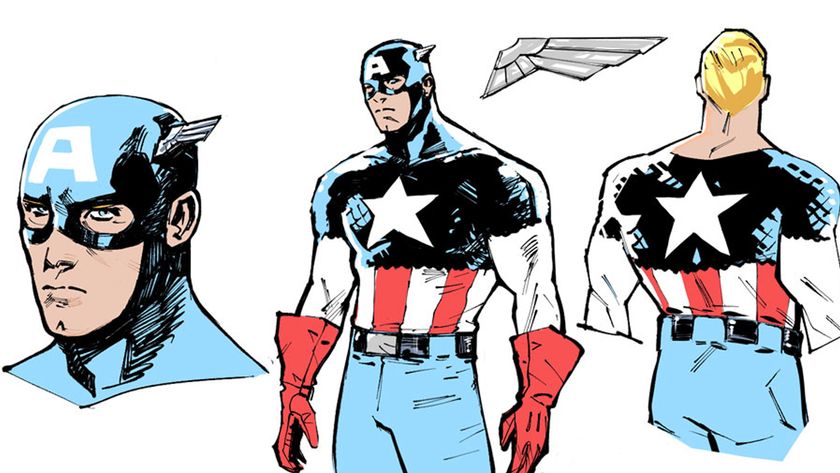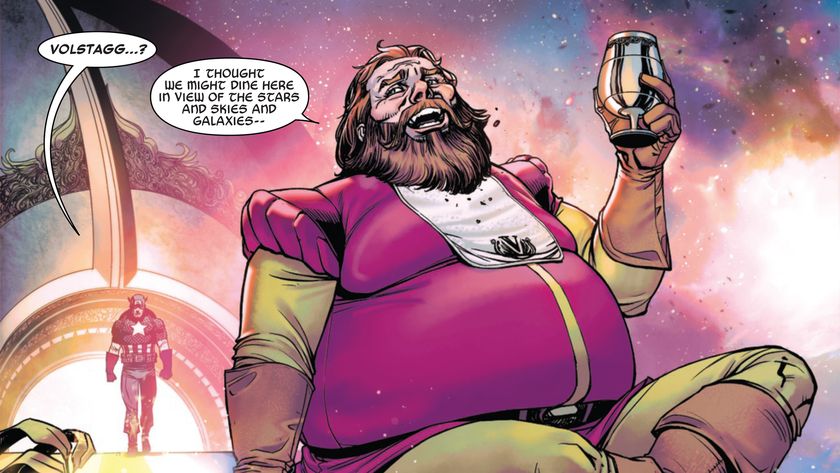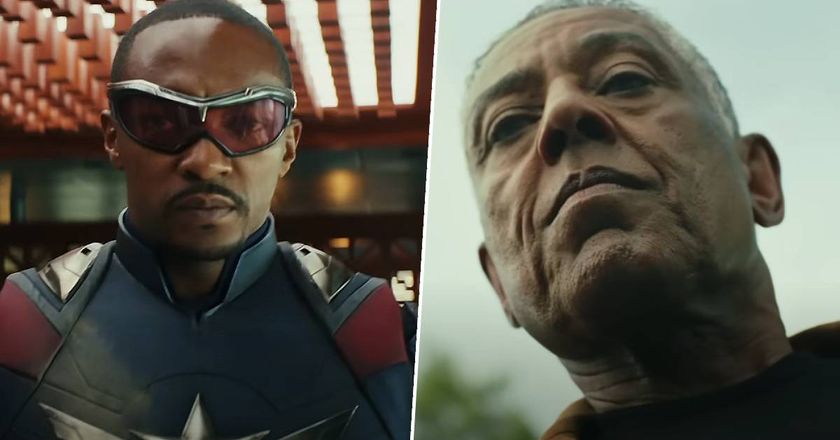Deadpool, Cable, X-Force, more - the top creations of Rob Liefeld
Maximum extremes with Rob Liefeld

Rob Liefeld is one of modern comics' most enduring but also most polarizing creators thanks to his various creations and co-creations. You know the names - Deadpool, Cable, Youngblood - but that's just scratching the surface.
November 24's X-Force: Killshot Anniversary Special #1 celebrating the 30th anniversary of X-Force features Cable and Deadpool and more recent Liefeld creations like Major X and Venompool, so now's a good time to cut deep and delve into all the major characters Rob Liefeld has created for Marvel Comics and his own creator-owned catalog including his Image Comics work.
Clenched teeth? Check. Pouches? Check. Characters with 'blood' in their name? Bloody check.
Here are the top Rob Liefeld creations in comic books.
Mutant Liberation Front
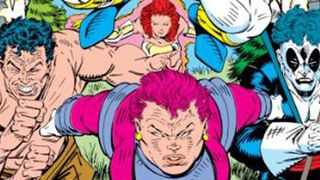
Lost amidst the luster of Cable's debut and the evolution of the New Mutants into X-Force, the Mutant Liberation Front were a group of disillusioned mutants looking for a cause that was less conciliatory than Professor X or even Magneto's views on human/mutant relations.
Strobe, Dragoness, Forearm, Reaper, and the other initial members were caught in the proverbial spell of Stryfe - a man from the future with an uncanny knack to know how things would progress in the modern-day, and with an ax to grind against Cable and the X-Men.
Co-created by Liefeld and Louise Simonson, the Mutant Liberation Front were mutant upstarts militarized by Stryfe into terrorists - a unique premise (especially for 1990) that neither of its creators were ever fully able to explore before leaving the X-titles.
Comic deals, prizes and latest news
Get the best comic news, insights, opinions, analysis and more!
Several Mutant Liberation Front characters have been recently seen again as part of the current X-Men era on Krakoa.
Rikki Barnes
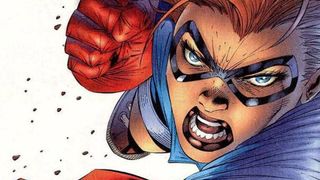
Long before the Marvel's "diversity wave" (as former-editor-in-chief Axel Alonso called it), Liefeld and Jeph Loeb put a new face to a classic part of the Marvel mythos with Rikki Barnes - and it wasn't diversity for diversity's sake.
Introduced in the 'Heroes Reborn' Captain America #1, Rikki Barnes was introduced as the granddaughter of the original Bucky Barnes (who at that time was still considered dead) and Peggy Carter - a unique pedigree, even moreso in 2021 than when originally introduced in 1996.
Loeb and Liefeld gave Rikki a fully-fleshed-out origin independent of Captain America before casting her as his sidekick. Subsequent creators quickly split Rikki off from Cap, however, with various solo adventures and teen team books over the years.
Bloodstrike
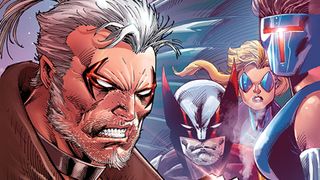
Picture Suicide Squad mixed with Mary Shelley's Frankenstein, and you have a close approximation of Bloodstrike.
Launched in 1993 by Liefeld, Dan Fraga, and Eric Stephenson, Bloodstrike was a black-ops special forces squad recruited from the US's military servicemen - but they didn't recruit the living, only the dead.
Resurrected by military scientists, Cabbot Stone and his fellow Bloodstrike members were revived and forced to fight another day. Whereas recruits of DC's Task Force X AKA the Suicide Squad are kept in check by a brain bomb, Liefeld's Bloodstrike was held in line by ongoing treatments that kept the re-animated soldiers alive - treatments they could only get if they continued to work for the government.
The series frequently put the Bloodstrike team into conflict with Liefeld's other team Brigade, led by Battlestone - the brother of Bloodstrike's Cabbot Stone. At one point, Bloodstrike's team roster was decimated, making it a de facto solo book for Cabbot, with him taking the team name as his own.
Bloodwulf
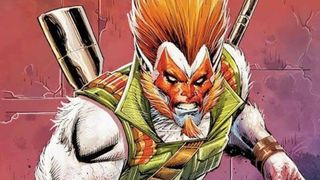
Yes, another Liefeld concept with 'blood' in the name. And it's not the last.
Originally introduced in the unique Image anthology Darker Image, Bloodwulf was typecast as a Lobo ripoff right out of the gate - and Liefeld didn't shy away from the comparison, using Lobo in early issues without DC's permission to frame it as an over-exposed parody of his creators' intentions.
But whereas Bloodwulf started as a derivative of Lobo, the character evolved to become something Lobo's owners, DC, would arguably never allow. Between his multiple wives, dozens of children, and straight-out lampooning of everything from Star Wars to Neil Gaiman (One word: "Gaimanwank"), Liefeld pushed buttons up and down the board to generate comedy and controversy.
Some people might be turned off by Bloodwulf's derivative origins, but remember - there wouldn't be a Wade Wilson without a Slade Wilson (That's Deadpool and Deathstroke, for those that don't know).
Domino
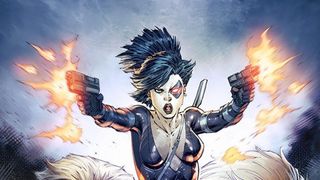
Some might see Domino as a character built around a name with the white-and-black pattern she has, but there's more to her than you might think.
Although originally introduced as the right-hand woman to Cable in New Mutants #98 (yep, the same issue as Deadpool's debut), that appearance was eventually revealed as really being the shapeshifter Copycat masquerading as Domino - meaning the character didn't actually debut until a year later in X-Force #8.
Despite that odd start, the character has grown into a significant part of the X-Men mythos through co-starring roles in team books and several solo miniseries (including one drawn by Black Panther's Brian Stelfreeze).
Mutant by birth (with the power of luck, no less), Domino was raised in a top-secret breeding program - a la Black Widow's Red Room - before being rescued and taken in by a Catholic priest. It wasn't until years later she joined Cable and his then-team Six Pack, eventually following him to X-Force, even becoming the team's leader for a time.
Domino is currently in the revived X-Force, working with Wolverine. The character was adapted for live-action in Deadpool 2 by actor Zazie Beetz.
X-Force
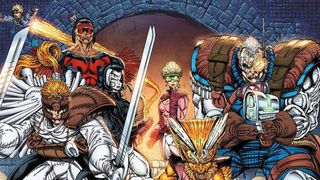
Although there was an X-Force before Liefeld took over New Mutants (Google it!), it's Liefeld's take on this team of Xavier's School drop-outs that made a mark in 1991. Though the team's concept was later officially expanded to be the X-Men's black-ops assassin squad, that darker edge was something Liefeld baked into X-Force from day one.
Liefeld's original take on the team holds up well - a group of mutants taking a more pragmatic and proactive approach to the ideals of X-Men founder Charles Xavier's dream. Like some sort of mutated version of SE Hinton's The Outsiders, the Xavier drop-outs adopted 'tough' looks under Cable's watch, and the rebellious actions to match. They even became so rebellious they kicked Cable out.
You could say after 100 New Mutants issues stuck as perpetual students, never advancing to full X-Men status as promised, these teen mutants took it upon themselves to graduate and become an X-Men-esque team of their own with X-Force.
Prophet
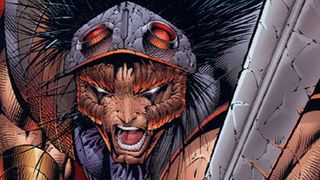
The 2012-2016 Prophet run by Brandon Graham, Simon Roy, and others earned high marks from critics, but the series originated way back in the '90s with Rob Liefeld.
Originally conceived by Liefeld as a superheroic Rip Van Winkle, John Prophet is a World War II veteran who undergoes experiments to become a super-soldier, before being cryogenically frozen to someday be thawed out to fight a war against demonic beings known as the Disciples.
Sure, Prophet sounds like Captain America - but with some sci-fi twists that make it a story all its own.
Although the 'extreme' art style employed by Liefeld, a young Dan Panosian, Stephen Platt, and others may have led some to recoil from the character at first blush, beneath the clenched teeth and Kirby-esque headgear is a unique concept inspired by the past, with a view towards innovation and the future.
Youngblood
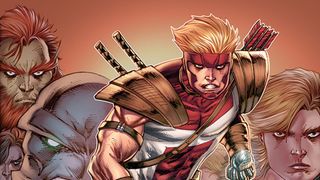
Beneath the shoulder pads and behind the pouches, Liefeld and Hank Kanalz's Youngblood was ahead of its time. Though the idea of superheroes as celebrities didn't originate with Youngblood, the heroes of the early Image flagship title were celebrities first, and superheroes second.
Coined during the heyday of MTV's Real World and the Michael Jordan era NBA Dream Team, Youngblood was a team with just as many endorsement deals as they had arch-rivals, and instead of wise and experienced mentors, they had skeevy managers, agents, and handlers.
When launched in 1991 however, the concept was overshadowed by the bluster of Image Comics' founding and what Liefeld said was a series of unfortunate writers. In 2007, Joe Casey re-scripted the initial arc - complete with a new ending drawn by Liefeld - that was published by Image as Maximum Youngblood.
In recent years, Liefeld has disassociated himself from Youngblood due to disagreements with the property's primary owner, Rip Media.
Deadpool
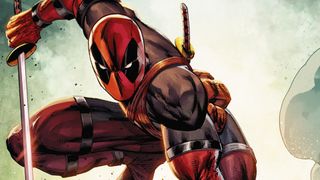
'...Wait, Deadpool isn't #1?' you say? Well, there's a reason for that.
Although Liefeld is most-identified these days for co-creating Deadpool, he only worked on the character sparingly at Marvel before leaving to start Image. He's returned from time to time for a few stories (and many covers), but while he and Fabian Nicieza would be considered the 'birth parents' of Wade Wilson, he was raised and popularized by later writers such as Joe Kelly and Gail Simone who gave Deadpool his bizarre humor and surrealist streak.
But what Liefeld had from the outset was good - a Deathstroke-style mercenary (and a name that is a homage to Deathstroke/Slade Wilson) with the quick wit of Spider-Man.
Introduced like a Boba Fett, this one-time side character grew in his early years to be a solo star on his own through several limited series and ongoing titles, and is now one of Marvel's most popular characters.
Want more? Make sure you've read all the best Deadpool comics out there.
Cable
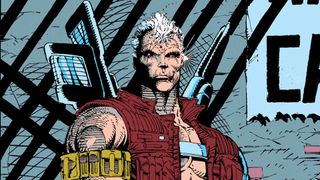
Birthed out of Liefeld's unpublished comic books and then polished up by New Mutants writer Louise Simonson, the man known as Cable (but almost Soldier-X) was a combination of elements popular at the time - a shadowy origin with ties across the Marvel U, a nihilistic view of superheroes, a twinkle in his eye (a la Longshot), and guns... lots and lots of guns.
He was Kyle Reese and the Terminator, all rolled into one.
Yes, Cable's look became so popular that he became the face of '90s cliches.
But Cable's story as an Abraham-esque chosen one sent into the rivers of time for a better future, then returning to his native time period as an adult, was (and is) so powerful it engrained him as a memorable Marvel character for decades.
Chris Arrant covered comic book news for Newsarama from 2003 to 2022 (and as editor/senior editor from 2015 to 2022) and has also written for USA Today, Life, Entertainment Weekly, Publisher's Weekly, Marvel Entertainment, TOKYOPOP, AdHouse Books, Cartoon Brew, Bleeding Cool, Comic Shop News, and CBR. He is the author of the book Modern: Masters Cliff Chiang, co-authored Art of Spider-Man Classic, and contributed to Dark Horse/Bedside Press' anthology Pros and (Comic) Cons. He has acted as a judge for the Will Eisner Comic Industry Awards, the Harvey Awards, and the Stan Lee Awards. Chris is a member of the American Library Association's Graphic Novel & Comics Round Table. (He/him)
Most Popular








